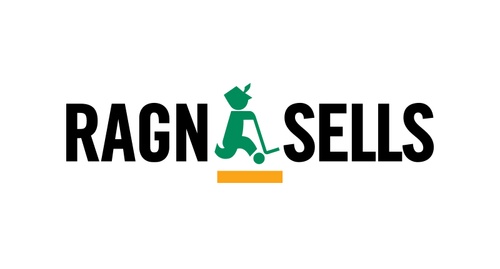UN: Ocean Crisis Threatens Food Security and Ecosystems – But Solutions Are Within Reach

At the UN Ocean Conference in Nice, world leaders and scientists warned that eutrophication, microplastics, and persistent chemicals like PFAS are rapidly degrading ocean health. With the food security of billions at stake, the call to act is urgent – but the technology to turn the tide already exists. What’s needed now is political will and global cooperation.
“The ocean is the ultimate shared resource. But we are failing it,” said UN Secretary-General António Guterres in his opening address.
The ocean covers over 70 percent of the Earth’s surface, generates around half of the oxygen we breathe, carries more than 80 percent of global trade, and supports more than three billion people, directly or indirectly. But ocean health is declining rapidly. According to the UN’s latest assessment, only a few of the global targets for oceans (SDG 14) are currently on track.
“A receptacle for our trash”
UNEP Executive Director Inger Andersen noted that around 80 percent of chemical pollution and excess nutrients in the oceans originate on land.
”Essentially the oceans are a receptacle of our trash. What we do on the terrestrial surface often ends up in the oceans when we fail to deal with it. What we do at the source about these problems is what matters. We have to understand that the linear economy no longer works – we have to talk about a circular economy, including for chemicals and waste”, said Inger Andersen at a high-level panel at the conference.
“The need for action is urgent”
The Nice conference highlighted land-based emissions as the main cause of declining ocean health – in particular nutrients, chemicals and plastics. Runoff from agriculture and wastewater systems leads to eutrophication and creates oxygen-depleted “dead zones” along coastlines. At the same time, persistent chemicals such as PFAS – nearly impossible to break down – accumulate in everything from plankton to people.
“With accelerating climate change, biodiversity loss and increased pollution, the need for action is urgent,” said Swedish Environment Minister Romina Pourmokhtari at the conference.
From source to sea
Microplastics were also highlighted as a growing concern. These tiny plastic particles are now found in every ocean on Earth, absorbed by organisms low in the food chain – and eventually, by people too.
“We know that many of the challenges facing our waters come from land-based activities. That’s why our water ecosystems must be healthy from source to sea. Because our waters are circular ecosystems. To protect the ocean, we must stop pollution at the source,” said Jessika Roswall, EU Commissioner for Environment, Water Resilience and a Competitive Circular Economy.
Solutions exist – political action is needed
Among the voices in Nice was Lars Lindén, CEO of the Swedish environmental company Ragn-Sells. He called for political action to transform wastewater treatment plants – from minimizing harm to recovering valuable resources such as nutrients, energy and clean water:
“To restore ocean health, we need effective nutrient management and a drastic reduction in pollution from microplastics, PFAS and other chemicals,” said Lars Lindén.
Ragn-Sells’ innovation company EasyMining has developed a technology – Ash2Phos – that makes it possible to recover over 90 percent of the phosphorus in sewage sludge ash. This provides a safe, circular and locally produced source of one of agriculture’s most vital nutrients. Ragn-Sells has also helped initiate the development of Selpaxt – an innovation from Chromafora, a company partly owned by Ragn-Sells – that removes PFAS from contaminated hotspots.
Legislation holds back circular solutions
Despite this technical progress, outdated legislation still holds back circular solutions. One example discussed in Nice is the EU’s continued ban on using recycled phosphorus in animal feed – a rule introduced during the BSE crisis that does not reflect today’s safe incineration methods. If not addressed, this could push innovation out of Europe and into other parts of the world.
“By simply updating an outdated annex in EU feed legislation, we could create a green billion-euro industry and close the phosphorus loop,” says Pär Larshans, Chief Sustainability Officer at Ragn-Sells Group, who also attended the UN conference.
“Phosphorus often ends up in our rivers, causing eutrophication. Yet we depend on it to grow food. Circular solutions can fix both—restoring marine health while supporting more resilient food systems.”
Without healthy oceans – no healthy planet
The Nice conference concluded with a political declaration and hundreds of voluntary commitments, collected in the so-called Nice Ocean Action Plan. The focus is on reducing pollution, protecting marine ecosystems, strengthening international collaboration, and unlocking more investment in blue innovation and ocean protection.
“Without healthy oceans, there can be no healthy planet,” António Guterres reminded delegates.
Facts: 2025 UN Ocean Conference
What: The third United Nations Ocean Conference (UNOC3) took place in Nice, France, in June 2025, co-hosted by France and Costa Rica.
Focus: The conference gathered leaders, scientists, and civil society from around the world to accelerate action for ocean protection, tackling threats like pollution, overfishing, and climate change.
Outcome: UNOC3 resulted in a political declaration and the Nice Ocean Action Plan, with new commitments to reduce marine pollution, strengthen marine protection, and advance international ocean law.
Read more: https://sdgs.un.org/conferences/ocean2025
About Ragn-Sells Group
The environmental company Ragn-Sells converts waste into raw materials that can be used over and over again. Ragn-Sells drives the transition to a circular economy through solutions that reduce its own and other actors' environmental and climate impact. Ragn-Sells is a family owned corporate group founded in 1881. The company operates in four countries and employs 2,760 people. In 2024, Ragn-Sells’ turnover was SEK 8.8 billion. www.ragnsells.com
Contacts
Press Officer
- press@ragnsells.com
- +46709272400


